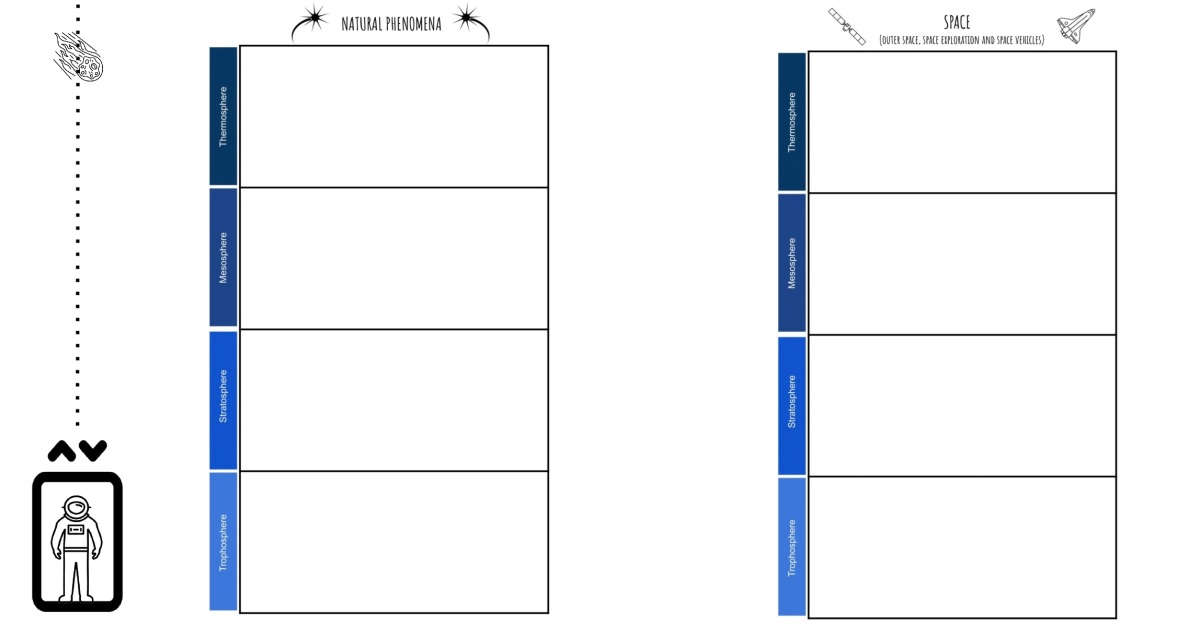A few months ago, I shared Wonders of Street View: some activity ideas using Neal Agarwal’s fascinating website, neal.fun. One of the latest additions to the site, Space Elevator, allows us to simulate travelling up into space simply by scrolling up!
This interactive tool provides insights into the changes that occur in the atmosphere, including information about animals, various natural phenomena, or the types of aircraft we might expect to find.
So how about using this captivating content in an interactive lesson that allows the students to practise their reading and speaking skills?
LEAD-IN
1. Elicit the different layers of the atmosphere: Troposphere, Statosphere, Mesosphere and Thermosphere. How high does a regular passenger plane fly? And a monarch butterfly? How about the highest paper plane flight? Where would you need a spacesuit?
JIGSAW READING
2. Make groups of 6 and provide each student with a chart on one of the following categories: clouds, natural phenomena, aircraft and aviation, space, animals, and altitude-related records. Ask the students to explore Space Elevator and complete their charts with as much information about their assigned category as possible.
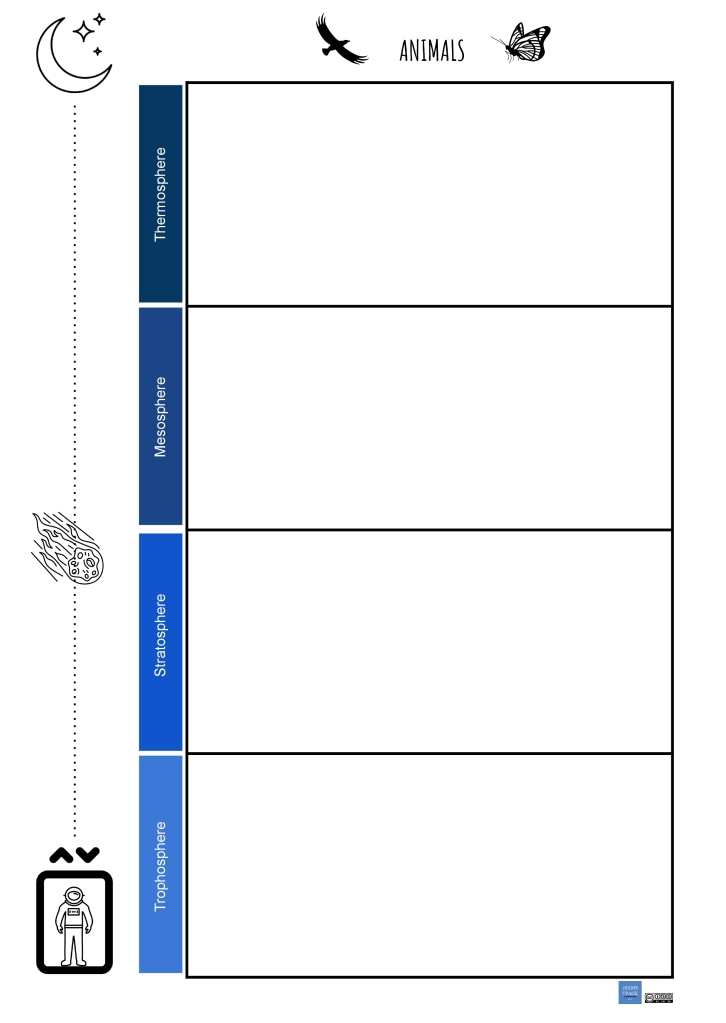




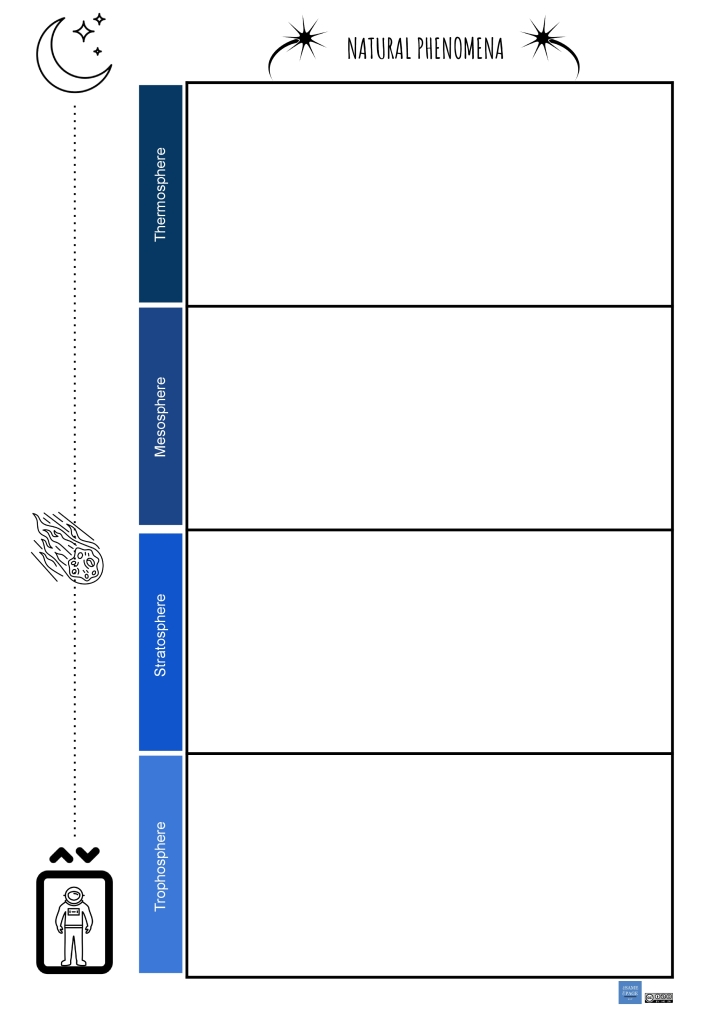
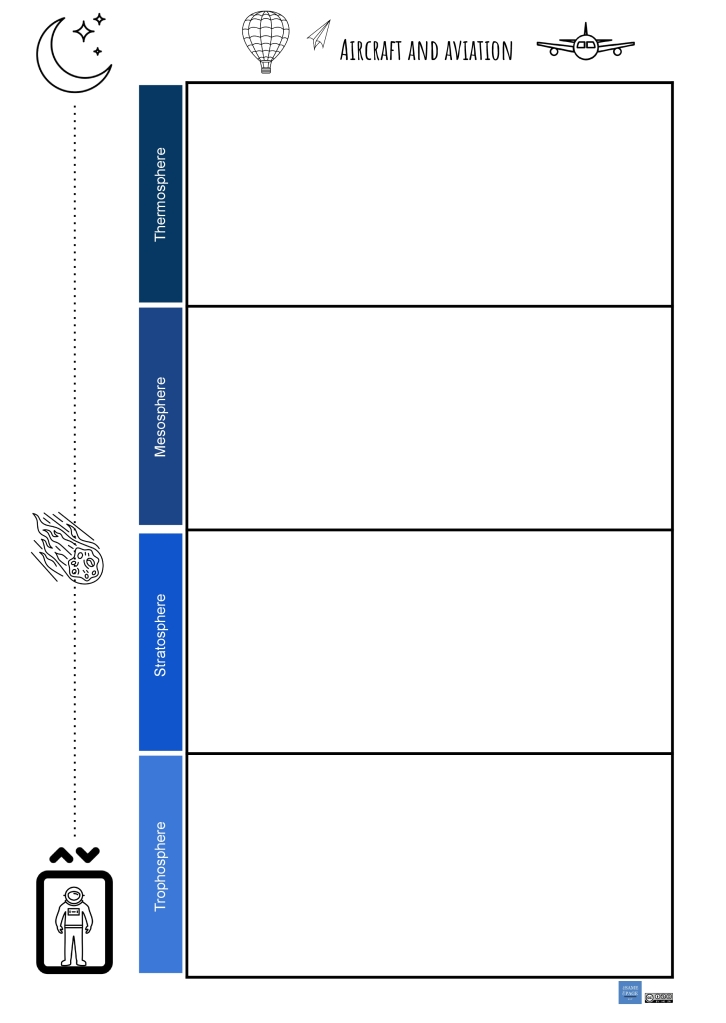
3. Encourage the students to use online dictionaries to clarify the meaning of unfamiliar words. You may also want them to write down any new or key words, or even write a collaborative glossary between the six members of each group as they read.
(Please find a fillable PDF file version here.)
4. Ask the students to work together and share their findings within their groups. They can use this summary chart to write down the most interesting facts they have found for each category:
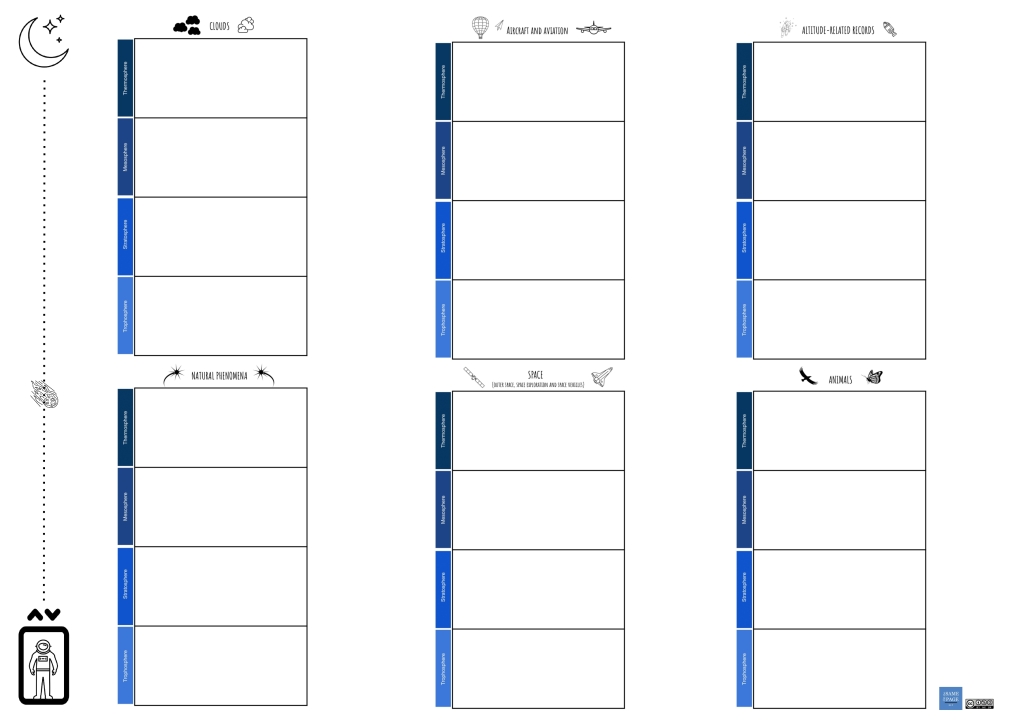
(You can download the fillable version here.)
5. Allow each group to share a few interesting facts or examples with the whole class.
FOLLOW-UP
6. Ask each group to choose one thing they have read that they would like to know more about. The students use the internet and other resources to research and gather information, taking notes and collecting relevant sources for future reference.
7. Each group prepares a brief presentation to share with the rest of the class, followed by any questions the rest of the students may want to ask.

CLOSURE
8. Play this quiz game as a whole group!
9. Stand and Share: have all the students in the class write down one thing they have learnt or found interesting and have them stand up. Students take turns sharing their choices. If another student has written the same thing that their partner is sharing, they can sit down. The activity goes on until everyone is sitting down. (You can also focus on vocabulary and repeat the same procedure by having the students share one word they have learnt during the lesson!)

